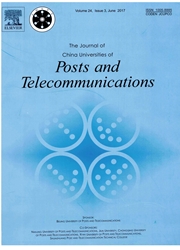

 中文摘要:
中文摘要:
变化人口密度导致卫星的 imbalanced 利用率。为了在卫星上保证交通的一个聪明的工程,联网,为单人赛分层的卫星网络的一个分布式的路由计划,基于活动代理人(LBRP 麻省) 平衡路由协议的负担被建议。为 LBRP 麻省,活动代理人由独立地移居探索线路。在到达目的地之上,活动代理人移居回来。在每颗中间的卫星上,活动代理人就地理位置以及内部卫星的连接(ISL ) 花费了的卫星而言评估路径费用,并且最后考虑 ISL 拥挤索引更新路由表格。通过像信使的星座上的模拟,建议途径被显示与更好的产量完成固定的保证端对端的延期和减少包损失比率,它对在高交通的负担的情况下转的数据特别合适。而且,复杂性分析的结果证明 LBRP 麻省能有低机载的发信号,存储和计算要求。而且,象 ISL 拥挤那样的 LBRP 麻省的问题索引并且花费修正因素被讨论。
 英文摘要:
英文摘要:
The varying population density leads to imbalanced utilization rate of satellites. To ensure an intelligent engineering of traffic over satellite networks, a distributed routing scheme for single-layered satellite network, load balancing routing protocol based on mobile agent (LBRP-MA) is proposed. For LBRP-MA, mobile agents explore route by migrating autonomously. Upon arriving at destination, mobile agents migrate back. On each intermediate satellite, mobile agents evaluate path cost considering satellite geographical position as well as inter-satellite link (ISL) cost, and finally take ISL congestion index into account to update routing tables. Through simulations on the Courier-like constellation, the proposed approach is shown to achieve guaranteed end-to-end delay bound and decrease packet loss ratio with better throughput, which is especially suitable for data transferring in case of high traffic load. Moreover, results of the complexity analysis demonstrate that LBRP-MA can have low onboard signaling, storage and computation requirements. Furthermore, issues of LBRP-MA such as ISL congestion index and cost modification factor are discussed.
 同期刊论文项目
同期刊论文项目
 同项目期刊论文
同项目期刊论文
 An adaptive remeshing technique based on hierarchical error estimates for simulation of semiconducto
An adaptive remeshing technique based on hierarchical error estimates for simulation of semiconducto Key technologies of new malicious code developments and defensive measures in communication networks
Key technologies of new malicious code developments and defensive measures in communication networks 期刊信息
期刊信息
